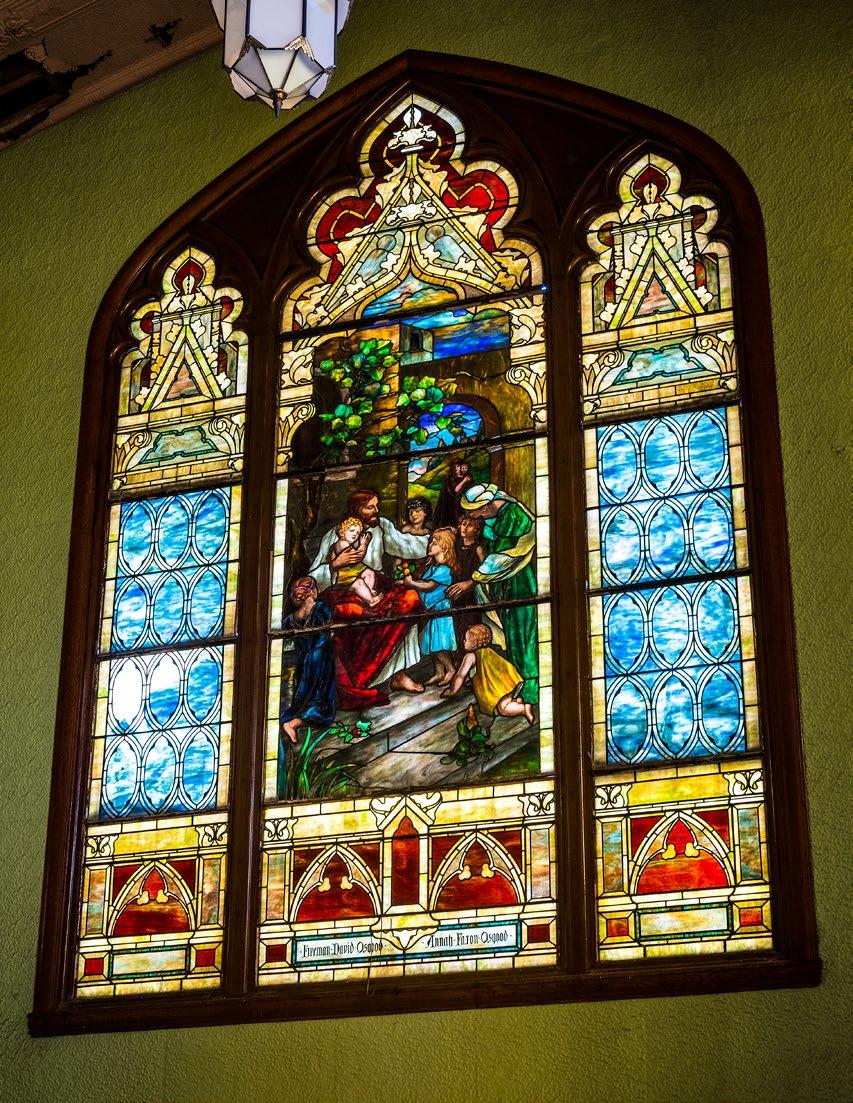
2 minute read
Stained Glass at St. James Church
Symbols of Unity, Expressions of Faith
STORIES FROM THE STAINED GLASS WINDOWS OF ROXBURY’S ST. JAMES AFRICAN ORTHODOX CHURCH
Advertisement
from page 1 Although the designer and artisans remain undocumented, it’s known that these windows were installed by late 1911 or 1912. Consisting of leaded, semiopaque, opalescent sheet glass with tonal plating, jewel accents and vitreous painting, the focal point of this ensemble is the large pictorial window in the north wall overlooking Cedar Street. Modeled after the popular illustration, The Friend of Children (1885) by German artist Heinrich Hofmann, this window was given to the Norwegian Evangelical Free Church by the Osgood family, who were longstanding members of Roxbury’s Dudley Street Baptist Church and also affiliated with the so-called Unity Movement. Annah Faxon Osgood (1835-1911) was founder of the Ladies Unity Club of Roxbury and a supporter of numerous local civic and charitable projects. Among these was the Ladies Unity Club Home for Aged Women, which she established in 1902 at Roxbury’s Spooner -Lambert House (c. 1780, and a former HBI project).
In 1909 as a gesture of religious fellowship, Mrs. Osgood financed the Norwegian Evangelical Free Church’s purchase of her family’s Cedar Street estate, and after her death, the pictorial window was given to the church by her children in memory of Mrs. Osgood and her husband. At the center of this window the pictorial panel depicts a gathering of nurturing figures around a child who offers a bouquet of flowers to Jesus. Representing an allegory of personal courage, faith and humility - perhaps as public virtues - this suggests the spirit of early 20th century American Progressivism and the Unity Movement, as well as the personal character of Annah Faxon Osgood. A similar idealism resonates in the cycle of painted medallions which line the east and west walls of the auditorium. Each medallion in the east (Hawthorne Street) aisle depicts a symbol of faith or sacrifice, while each medallion in the opposite (west) window depicts a corresponding symbol of reward or salvation. Of note is the universal appeal of the floral symbols at the center of the east and west aisles. Recalling the child’s bouquet in the Osgood memorial window, these flowers mediate between the divergent symbolism of the flanking windows. On one side, the wheat sheaf and grapes are emblems of the Eucharist or orthodox ritualistic traditions. On the other side, the Bible and Alpha-Omega monogram represent the word of God or alternate evangelical preaching traditions. Altogether, this cycle of symbols captures the traditions of the Norwegian Free Church and the ecumenical spirit of the Unity Movement, while also inviting the engagement of St. James African Orthodox Church, as the successors who sustained this landmark into the 21st century. Lance Kasparian is an architect and stained glass historian. His full report is posted on HBI’s website, historicboston.org. Special thanks to Thomas Cairns MD, Archivist of the Evangelical Free Church of America in Minneapolis.











